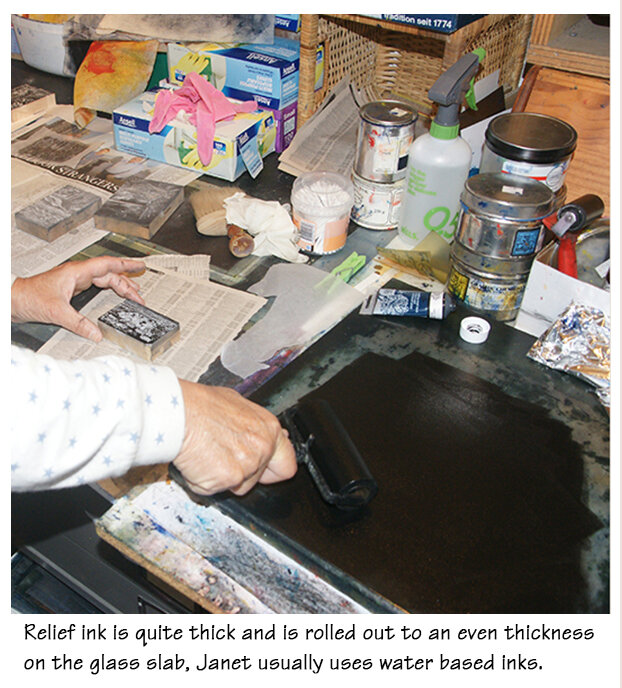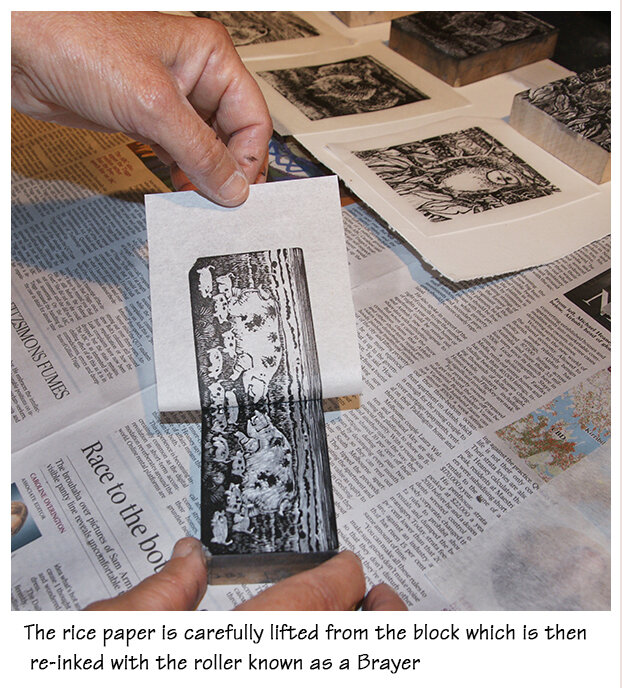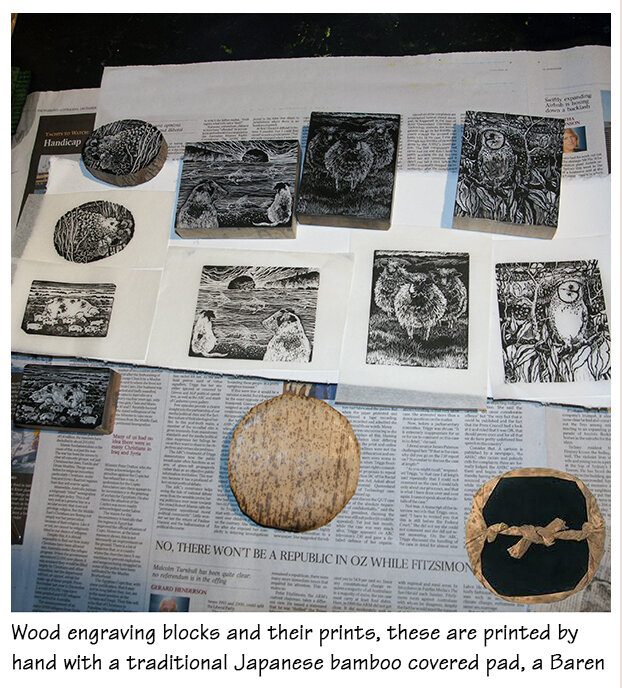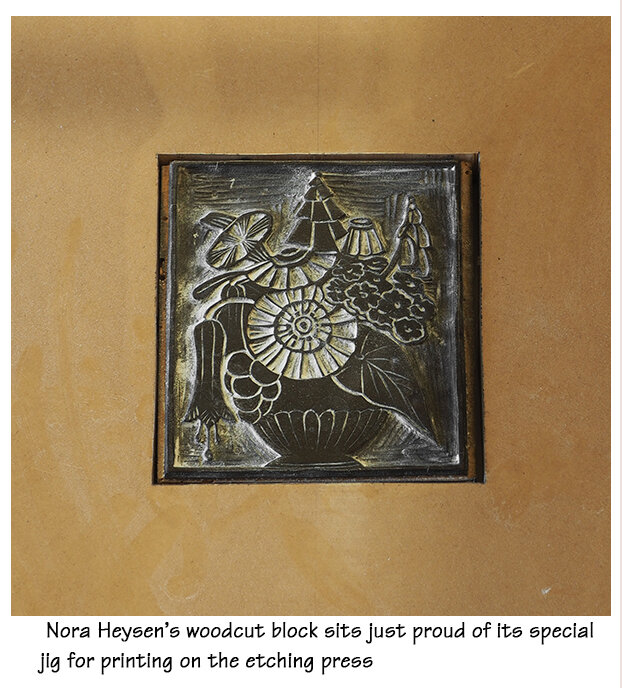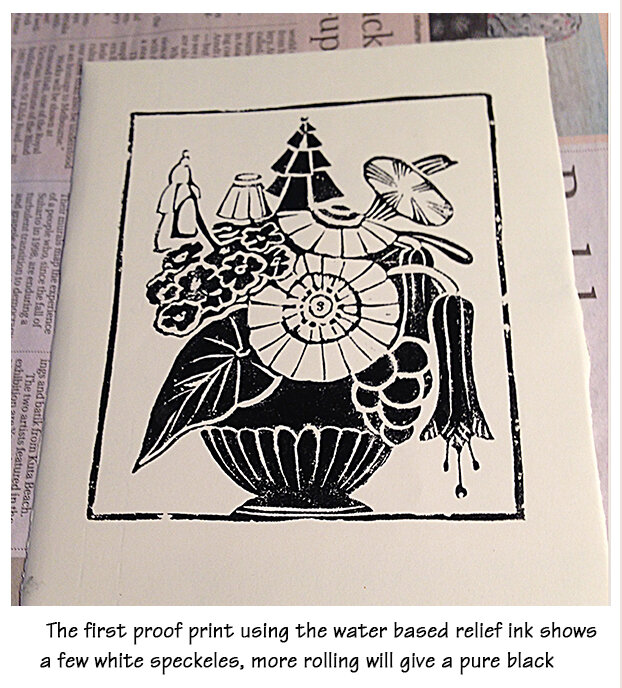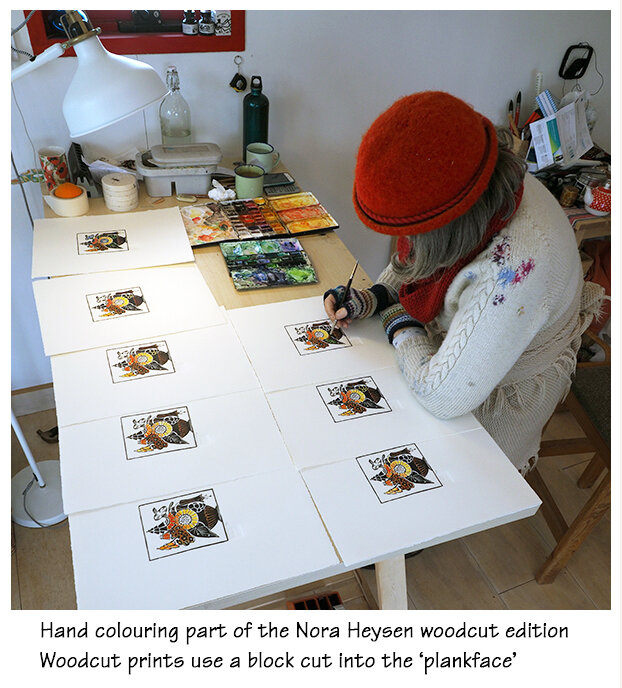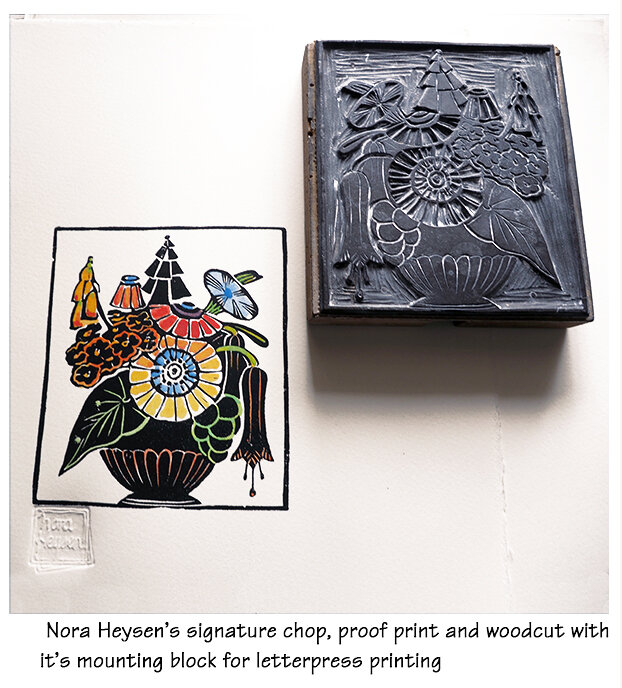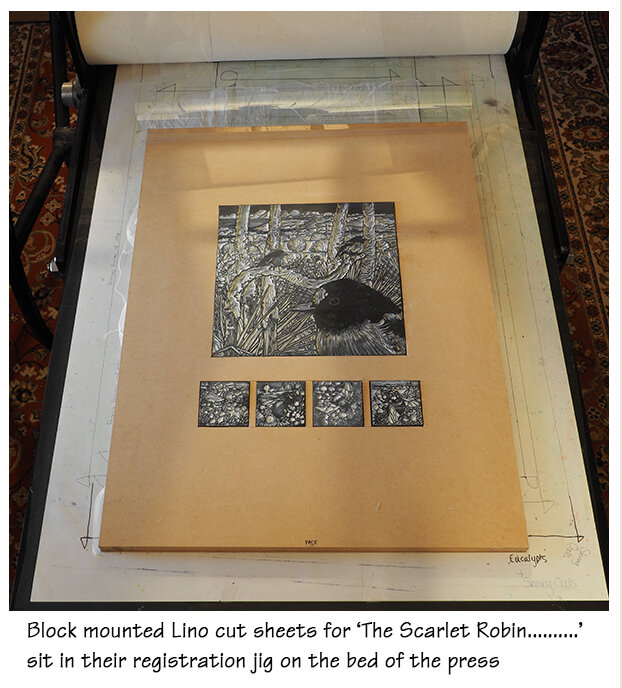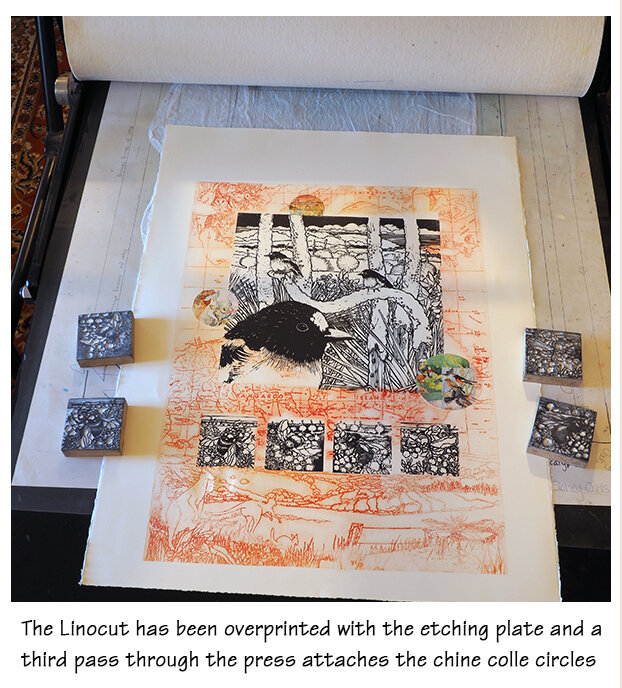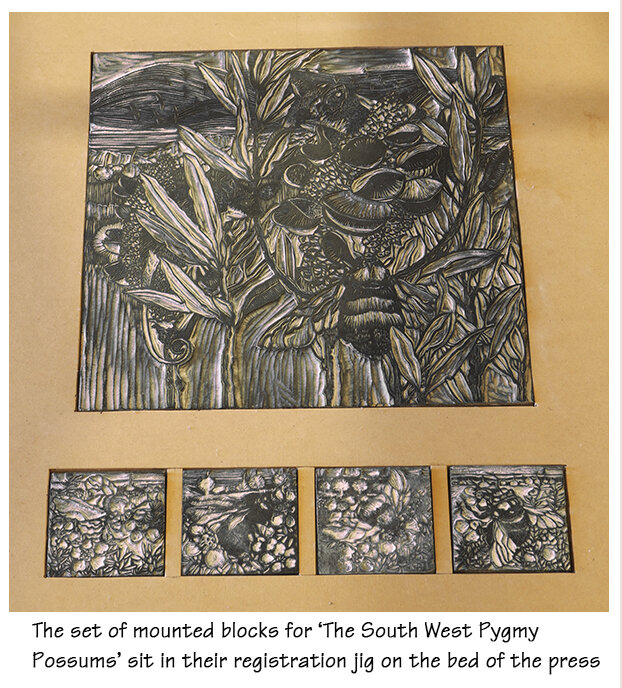What is Relief printing?
It is the opposite of Intaglio, in relief printing the image is created from the smooth surface of the block or sheet carrying a film of ink, the image being created by removing material with a variety of carving tools that will not be marked by ink during the rolling. Both metal and polymer plates can be surfaced inked and printed as a relief print. A wiped and polished etched plate can also be surface inked and printed.
Relief printing is a very direct form of print making, at it’s simplest, a drawing on a block or sheet is cut into, ink rolled over, paper placed down and rubbed hard and a print is taken. Specialized cutting tools are used, hand printing with a Baren, a vertical press, a letterpress and an etching press are all used. The following sequence of hand printing is the same for all three of Janet’s relief block materials.
The Prints known as Wood Engravings
Wooden blocks of hardwood timber, traditionally cut across a branch to create an end grain, usually of box, apple, pear or cherry wood with a very fine finish. These blocks will last for a very long time. The small tools are known as Gravers. The end grain allows for very fine and curved lines and crossing lines. In the past the gravers had wonderful names … ‘Scorpers, Spit and Bull stickers’. Each cut results in a white line or shape, reverse thinking of white on black. There is no turning back once a cut is made. I print by hand on different Japanese Washi (natural papers, including Rice, Kozo (mulberry), Hoshu (mulberry bark) and Gyokkuro (Japanese green tea leaves).
The Prints known as Woodcuts.
Wooden blocks from wide range of hard to soft timber panels, are cut with sharp Gouges, V for across the grain and U with it. Often the grain will show in the print as will the sharp peaks catching some ink in the open cut areas if the roller known as a Brayer is soft. Often these two effects are desirable.
This mounted woodblock created by Nora Heysen, daughter of Hans was found in her studio at the Cedars in Hahndorf SA. Janet was commissioned by the Heysen Foundation to produce a black and white and colour limited editions from it. The panel was all ready mounted for letterpress printing and smoothly finished for a dense black, and may have been created for a book or for an exhibition catalogue. It was carried in a jig for printing on Janet’s etching press. Multiple blocks each carrying a colour were common in the ‘modern’ age.
The Prints known as Linocuts
Sheets of Linoleum are cut with lighter weight tools that resemble gouges and gravers and can show some characteristics of both of the wood based techniques. The prints known as Linocuts have their own qualities and are much faster to create with the softer surface. The blocks themselves can be shaped easily with very clean edges, and ‘multiple plate’ and ‘reduction multiple colour’ prints were, and are commonly made.
A pair of etchings first exhibited at the National Wine Centre in the Fine Art Kangaroo Island SALA 2016 show are a combination intaglio/relief print. The relief blocks carry the black and so are the Key Plates. Usually the key plate is printed last, carrying the main image in the darkest ink. For accurate registration in the press it was printed first with mounted blocks in a jig, followed by the polymer plate etching inked with a transparent ink over the Lino print. The orange/red inks are invisible over the dense relief blacks. The white visible on the blocks is chalk dust used the make the carving more visible when working the block. Both are also available as linocuts.
“Wood Engraving is a very direct form of printmaking, A drawing is cut into a block, ink rolled over, paper placed down and the print taken. It all sounds so simple but to me it is the most exacting and hardest of printmaking techniques”.
Thomas Bewick in England developed wood engraving to a high level, in the 18th C. the Australian Lionel Lindsay made fine engravings and more recently Barbera Hanrahan, Edwina Ellis, Rosalind Atkins and David Frazer have all made exquisite work.
A number of the gravers I use were owned by Carl Stratmann the original perfect chocolate maker of the Beehive corner in Adelaide and also a perfect printmaker. These special gravers were kindly given to me by his grandson Jim Stratmann. The printing traditions of long ago continues.

